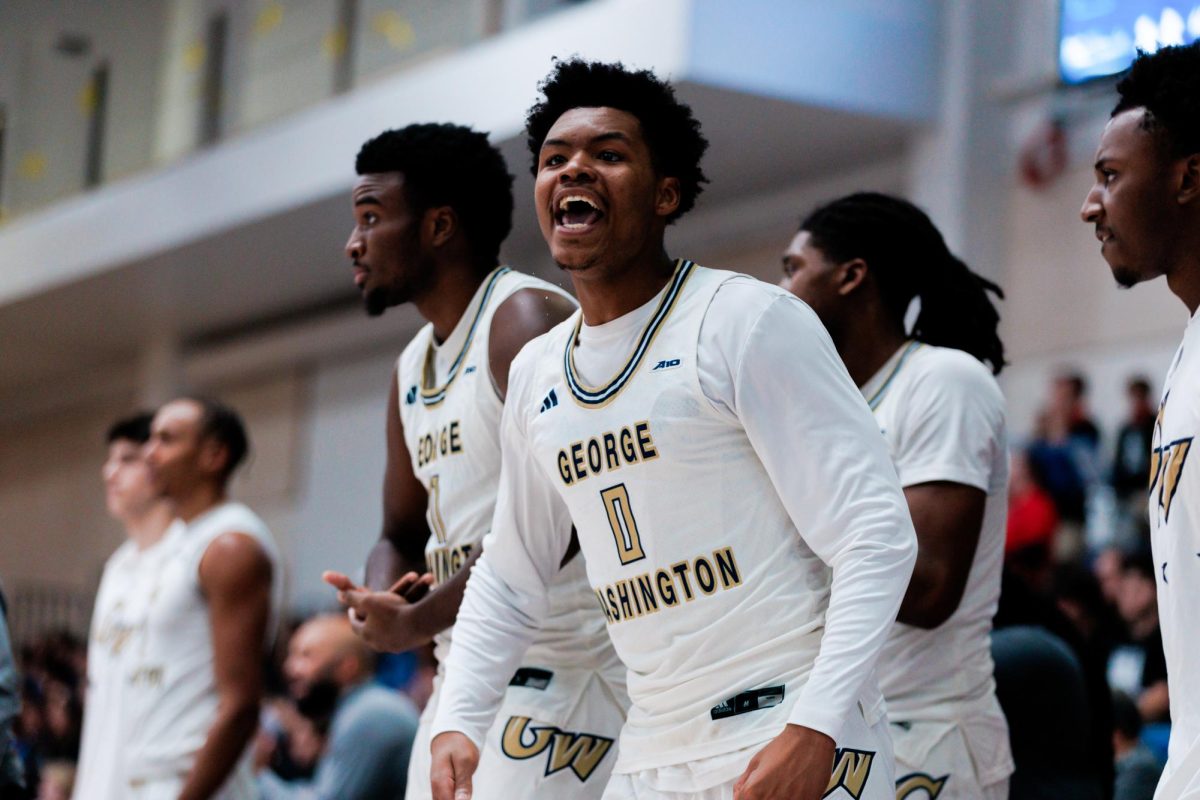Freshmen Kate O’Byrne and Laurel Wain are the only female student-athletes on a men’s team in the Class of 2021.
They are two of the four first-year coxswains on the men’s rowing roster this year and two of the three females on the team, including fellow coxswain sophomore Olivia Schiffman.
The transition into coxing in college was initially intimidating because they were tasked with leading a crew full of much larger and older men, they said.
“You are thrust into that leadership position, you are a freshman girl coxing a boat of upperclassmen men with very strong personalities,” Wain said. “You have to remember to be what they need in the boat, so even if it is intimidating, you have to just step up and do your best.”
Coxswains are in charge of steering the boat, making technical calls on the water and motivating rowers “to work harder than they think they can,” which is no easy task when it’s the middle of a race and rowers are exhausted, head coach Mark Davis said.
“They have to be comfortable being a pain in the ass,” Davis said. “The guys on the team actually respect that more than if they had somebody who came in and went easy on them on the water.”
O’Byrne and Wain both competed in their first collegiate regatta at the Head of the Potomac in September.
In men’s collegiate rowing, the minimum weight limit for a coxswain is 125 pounds, meaning the ideal coxswain would be exactly that weight. Including GW, 18 of last year’s top 20 teams included female coxswains on their rosters, according to the USRowing Coaches Poll.
O’Byrne and Wain, who have coxed for both men’s and women’s teams over the past six years, said they prefer to compete with men because the team carries fewer problems off the boat.
“For guys it is simple, it is to the point, you want to move let’s just move,” O’Byrne said. “Girls want to be talked to more and they want to be told very empowering type things.”
Both O’Byrne and Wain started rowing in seventh grade. Wain started rowing because she wanted to be like her older siblings, she said. The Milton, Mass. native, who has always been a coxswain, switched to the boys’ team her freshman year of high school because they had a shortage of coxswains.
“They just picked me and moved me to the separate team,” Wain said. “When I transferred high schools I just continued to cox men.”
O’Byrne also joined the sport in seventh grade after a friend recruited to the team. The New Rochelle, N.Y., native started as a rower before switching to the coxswain position after injuring her back.
After her freshman year, O’Byrne made the transition to the men’s team because she wanted a change of pace, she said.
When it came to rowing in college, O’Byrne actively sought out recruitment, while Wain walked on to the program in July.
“When we go out and recruit coxswains we just try to find the best ones we can, regardless of their gender,” Davis said. “We’re just fortunate we have two really good coxswains, both female and doing really well.”
Rowing in college had always been a goal for O’Byrne, who had narrowed down her search to just men’s teams. She said she chose GW’s program because of the close-knit team dynamic.
O’Byrne, who coxed for the RowAmerica Rye Club in New York, had the high-pressure experience under her belt that Davis said he was was looking for in a coxswain. She was a member of the U.S. Rowing Youth Nationals in the boy’s Varsity Four-with in 2016.
“She came highly recommended by her coaches,” Davis said. “They had a really competitive program there so she had been in some big races and been very successful. We knew we were getting a really concrete coxswain.”
Wain decided the summer heading into her freshman year that she wasn’t ready to give up the sport. After seeing her fellow coxswains recruited to college programs, Wain called Davis in July to see if she could walk on to the men’s team.
“I realized that it was something that has been a part of my school life and my maturing and growing up process for all of high school, and I didn’t want to let it go just yet,” Wain said.
Matt Cullen contributed reporting.





